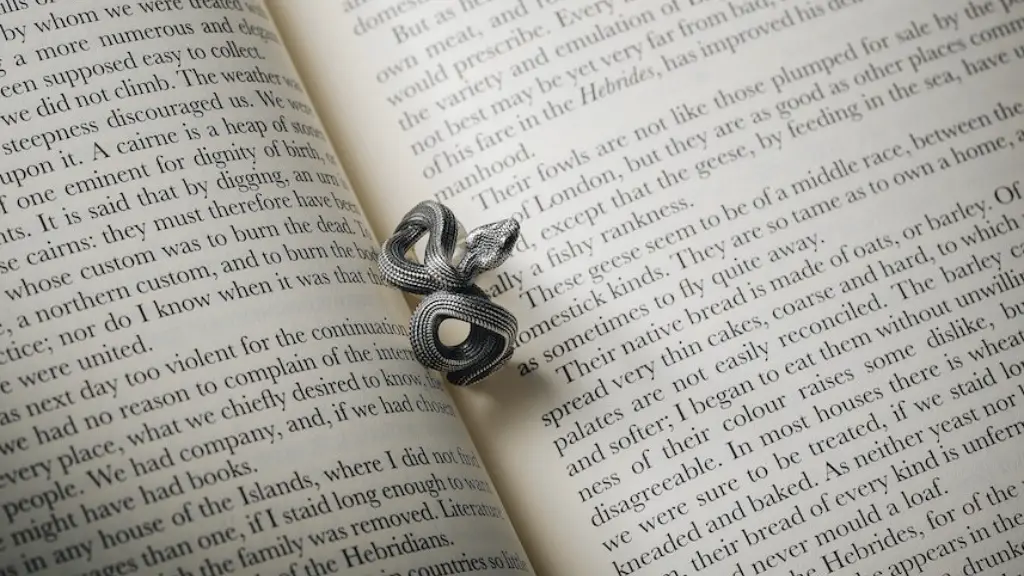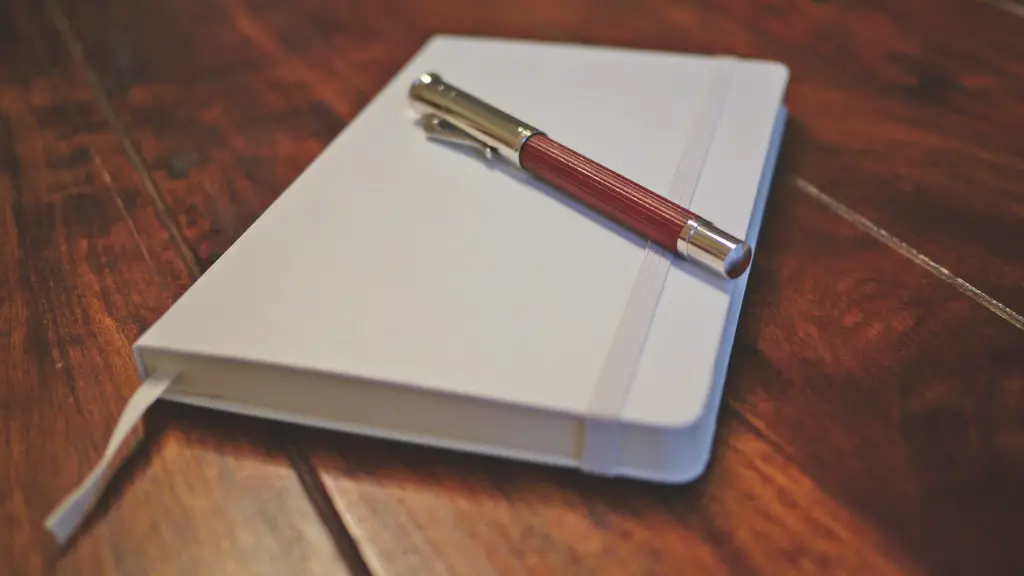Poetry: A Unique Literary Form
Poetry is a type of literature that uses verses and stanzas, rhyme, metaphor and other stylized language to express emotions, ideas, and observations. It is perhaps the oldest form of literature and can be found in almost all cultures throughout history. Poetry can be used as a vehicle of exploration, as a way of expressing one’s deepest emotions and thoughts, and it can also be used as a tool to explore the complexity of the human experience.
The word ‘poetry’ is derived from the Greek poeisis, which means ‘to create, make, do’. In a way, all poems are pieces of art crafted by the poet, who uses a powerful mix of language, symbols, and metaphors to create a unique and captivating experience for the reader.
The Elements of Poetry and How to Read It
To fully understand how to read and understand poetry, one must first understand the elements of poetry. The basic elements of poetry are rhythm, imagery, metaphor, simile, symbol, tone, and alliteration.
Rhythm is the pattern of beats, pauses, and other sound devices in a poem. By listening and looking for the patterns in a poem, you can begin to get a sense of the poet’s intended meaning.
Imagery is the description that is used to invoke a vivid mental image. In poetry, imagery can be used to evoke emotions or describe a situation or event.
Metaphor and simile are two major literary devices that poets use to explore abstract concepts or compare two things. Metaphors replace the words with a different subject, while similes describe one subject in terms of another.
Symbols are objects or other elements that evoke a certain feeling or idea. A symbol can be used to represent a larger concept or serve as a reminder of something being experienced.
The tone of a poem is the attitude or emotion that the poet expresses. Reading carefully and noticing the words and phrases the poet uses can help you identify the tone of a poem.
Alliteration is the repetition of vowel or consonant sounds in a phrase. This technique is used to create a rhythm and flow that can add to the meaning of the poem.
Tips For Reading and Understanding Poetry
Understanding poetry can be challenging but rewarding. Here are a few tips to help you dive into reading and understanding poetry:
- Read the poem aloud. Reading a poem aloud allows you to hear the rhymes and rhythms, paying attention to the words and their order, to help you get a sense of the poem’s meaning.
- Take your time and read the poem more than once. Poems can often require careful consideration, so don’t be afraid to read the poem over several times, paying attention to the imagery, symbolism, and tone.
- Identify key words and phrases. Pay attention to the words the poet chooses, noting any words or phrases that stand out to you. This can be a great way to find the meaning of a poem.
- Look up any unfamiliar words. Poems are often littered with language that can be unfamiliar to the reader. A quick search of the definition of a word can help to further your understanding of the poem.
- Think critically. Applying a critical eye to a poem can be a great way to help reveal the poet’s themes and intentions. Ask yourself questions about the poem, such as why the poet chose certain words and how it connects to other works or art.
Exploring the Meaning of a Poem
Exploring the meaning of a poem is an essential part of understanding poetry. After taking the time to read and re-read the poem, you may still feel unsure of the poet’s true message. Here are a few questions to help you explore the meaning of a poem:
- What is the subject? Is it a person, an event, a feeling, or some combination?
- Who are the characters in the poem? Are they real or fictional? How do they affect the poem?
- What is the overall tone of the poem? Is it light, dark, angry, sad, or something else?
- What themes appear in the poem? Does the poet explore any particular themes, such as love, loss, hope, or regret?
- Does the poem have a conclusion or resolution? Does the poet give any hint at a different outcome than the one presented?
Interpreting the Meaning of a Poem
Interpreting the meaning of a poem can be a difficult, yet rewarding task. Poetry is often open to various interpretations, and each reader can arrive at their own conclusions. Here are a few tips to help you interpret the meaning of a poem:
- Look to the diction and the structure of the poem to look for hints at the poet’s message. Are there repeated words or images? How does the poet use metaphor and simile to convey meaning?
- Look for patterns in the poem, such as rhythm or rhyme, to help you make sense of the poem.
- Consider the context of the poem. Has the poet given any clues as to their intent with the poem or the time period it was written in?
- Some poems are written to be deciphered, with the poet leaving clues in the form of puns and hidden meanings. Pay attention to the words the poet has chosen and look for any potential metaphors or symbols they’ve used.
Analysis and Criticism of Poetry
Once a poem is understood, it can be analyzed and critiqued. Analysis and criticism involve examining a poem and making judgments about it. Criticism of a poem means taking a deeper look at the poem and its themes, imagery, and how it contributes to the larger body of work it belongs to. Here are a few things to consider when analyzing/critiquing poetry:
- What is the poet’s intent with the poem? Is the poem intended to evoke a certain emotion or express a certain idea?
- Are there any historical or religious references in the poem? How are those references relevant to the overall meaning of the poem?
- What literary techniques does the poet use? Are there any metaphors or similes used to convey a particular idea?
- Does the poem have any overall message or meaning? Is the poet making any statement or imparting any wisdom?
- How does the poem fit into the larger literary context? Are there similar works or themes that relate to the poem?
Incorporating Poetry Analysis into the Classroom
Analyzing poetry can be a great way to engage students in the English classroom. Poetry analysis can be combined with close reading exercises to help students connect with the language and develop their critical thinking skills. Here are a few tips for incorporating poetry analysis into the classroom:
- Have students read aloud the poem with the use of rhythm and melody. This can help students get a better understanding of the poem and its structure.
- Invite students to apply the poem to a real-life situation. Have them brainstorm ideas, such as current events or their personal experiences, that they can use to analyze the poem.
- Lead a group activity to discuss the poem and its meaning. Encourage students to share their thoughts and opinions and listen to one another.
- Have students apply their analysis by creating something based on the poem. This could be a short story, song, painting, or any other type of creative expression that relates to the poem.
- Integrate other forms of media into the discussion. Showing years, video clips, or artwork related to the poem can serve as an effective teaching tool.
Exploring Poetry from Various Perspectives
When exploring different types of poetry, it is important to consider the context in which the poem was written. By understanding the culture, history, and beliefs of different poets, students can gain valuable insights into the poetry that transcends cultures and generations. Here are several tips for exploring poetry from various perspectives:
- Do research on the poets and the time period in which the poem was written. This can help students gain a better understanding of the poem.
- Look beyond the language, rhythms, and imagery of the poem. Consider the social context in which it was written and the source of the poet’s inspiration.
- Explore the poem through various lenses. Students can examine the poem from different angles, such as philosophical, gender-based, and spiritual.
- Examine modern interpretations of the poem and compare them to previous interpretations. Look for any common themes or discrepancies that appear in different interpretations.
- Integrate discussion of other works of literature into the exploration of the poem. Ask students to identify similarities or differences between the poem and other works of literature.
Learning Through Poetry
Learning about poetry is an ongoing process for both students and teachers alike. There are a few principles that can be applied when teaching and learning about poetry:
- Approach poetry with an open mind. Allow yourself the opportunity to be inspired by the words and ideas presented in the poem.
- Read critically. Pay attention to the imagery, symbols, and themes the poet presents and think critically about their implications.
- Explore other sources of poetry. Poetry can be found in various forms, such as film, television, and music. Read a variety of works to gain a better understanding of different poetic traditions.
- Encourage discussion. Inviting students to share their thoughts and opinions can be a great way to foster a classroom discussion about poetry.
- Keep an open notebook. Jot down any ideas or questions related to the poem to refer back to later. Writing notes during class can help students further engage with the poem and retain what was discussed.


